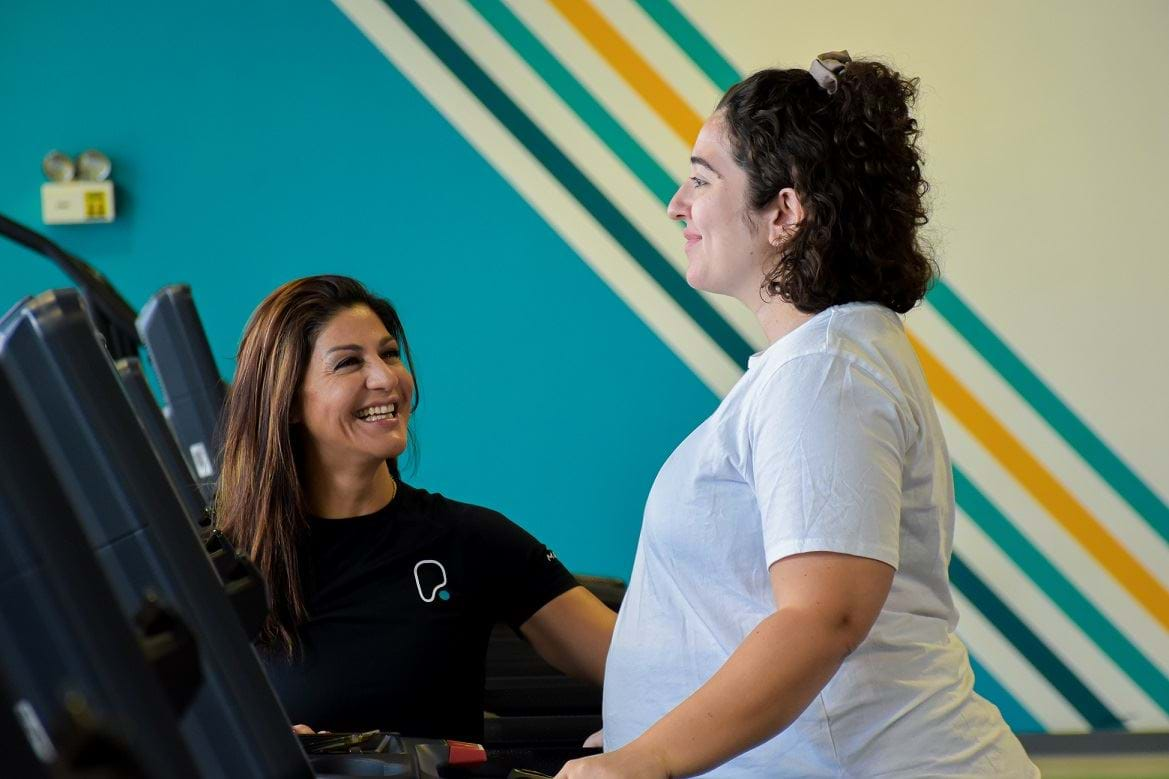Exercise During Pregnancy

Regular exercise offers numerous health benefits during pregnancy, from easing discomfort and managing prenatal health conditions to supporting a smoother postpartum recovery. In this guide, we’ll explore the benefits of staying active during pregnancy, highlight safe exercises, identify those to avoid, and debunk common myths about working out while expecting:
The Benefits of Exercise During Pregnancy
Exercise during pregnancy offers numerous health benefits for both mother and baby. Here’s how staying active can contribute to a healthier and more comfortable pregnancy journey:
- Decreases the Risk of Gestational Diabetes: Exercising while you’re expecting may lower the odds of developing certain conditions like gestational diabetes. And if you do develop gestational diabetes, staying active can help regulate your insulin levels.
- Eases Constipation: An active body encourages active bowels. Some women say a that a 30-minute walk has help to keep them regular, while others say even a 10-minute stroll helps get things going.
- Helps You Get Ready for Childbirth: Regular workout will help getting ready for childbirth by strengthening your muscles and building stamina.
- Boosts Your Mood: Women are more susceptible to depression during pregnancy, with an estimated 1 in 2 of all women reporting increased depression or anxiety while expecting. Research has found that exercise during pregnancy releases endorphins that help improve mood while diminishing stress and anxiety.
Safe and Effective Workouts for Each Trimester
While you should always check with your health care provider on what would be best for you and your baby, staying active during your pregnancy has shown a lot of benefits. As your body makes room for your growing baby, you may wonder which exercises are safe during each trimester. Let’s explore in each trimester, which are the best exercises:
- First Trimester: Going for a brisk walk is a great exercise during this stage. If you’re just getting started, walk 10-15 minutes a day and gradually increase to a 30-minute walk 3-5 times a week. For women without pre-existing health conditions and who were exercising prior to pregnancy, if you were highly active before getting pregnant and remain healthy, you can continue with your normal workout.
- Second Trimester: You may continue with walking, swimming and pre-pregnancy exercises like glute exercises for women and crunches. Try to avoid high impact exercise or lifting weight over 10 kilos. Prenatal yoga and stretching can also be very beneficial and help increase your strength and flexibility as you prepare for childbirth.
- Third Trimester: The best workouts for your third trimester are swimming, walking and biking. Prenatal yoga is still a good option for this stage as you get ready to deliver your baby. If you’re continuing with resistance exercises, it’s okay to lighten the load. Some women work out through the end of their pregnancy, but some may stop. Either way, it’s important to listen to your body and talk with your doctor.
Exercises to Avoid While Pregnant
When choosing physical activities during pregnancy, it's important to avoid exercises that carry a high risk of injury. This includes contact sports like dodgeball, football, and basketball, which may involve impacts or collisions. Activities with a high risk of falling, such as skiing or horseback riding, should also be avoided. Additionally, pregnant individuals should steer clear of activities that can cause fluctuations in oxygen levels, such as scuba diving and skydiving.
Exercise and Pregnancy Myths
Myth 1: If you didn’t work out before pregnancy, you shouldn’t start now. Fact: Even if you didn’t exercise regularly before pregnancy, staying active is often recommended. The only exceptions are if your doctor advises against it or if there are concerns about a high-risk pregnancy.
Myth 2: Too much exercise will take away nutrients from your baby. Fact: Exercise will not take nutrients from your baby. If your body needs additional nutrients, it will draw from your own reserves, not from your baby. To ensure both you and your baby stay well-nourished, aim to eat small, balanced meals throughout the day.
Myth 3: Lifting weights during pregnancy is dangerous. Fact: Lifting weights has been proven to improve overall health and lower the risk of heart attack, stroke, and osteoporosis. These benefits continue during pregnancy and are not reversed by it.
Frequently Asked Questions
- Can I do squats while pregnant?
If cleared by your doctor, squats are safe throughout pregnancy. We recommend doing at least 25 bodyweight squats daily.
- Can I lift weights while pregnant?
With modifications, weightlifting is safe during pregnancy. It helps build strength, prevent injuries, and aids in recovery after childbirth.